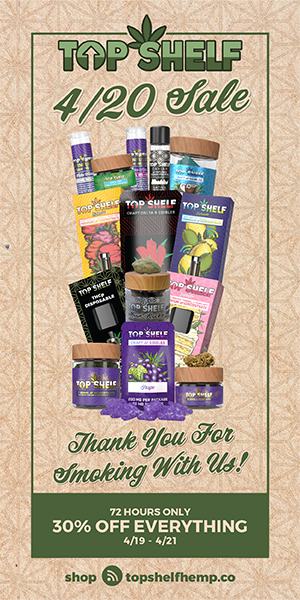** ALL NEW COUPON CODES FOR 2023! ** DaVinci Vaporizers NEW 2023 SPRING Deals[CLICK HERE] | Hemp Bombs CBD Oil At Checkout Use Code ” STOP10 “[CLICK HERE]-10% Off Site Wide! | Vape Wild E-Juice At Checkout Use Code ” WELCOME10 “[CLICK HERE] Get 3 FREE Bottles of liquid! | Up to 70% Off! VaporDNA Spring Clearance Sale![CLICK HERE]
What Is Hemp?

The staff at Stop Smoking Now Aids think hemp is one of the most useful and beneficial plants on earth. It serves multitudes of purposes from textiles to the most powerful holistic medicines. For thousands of years, humans have enjoyed the benefits of the hemp plant for various uses.
Now, hemp has been declared illegal in most countries of the world. Is hemp really what we think? Kindly read on as we’ll walk you through everything you need to know about hemp-the wonder plant.
Hemp-The History of American’s Wonder Crop

Before the use of hemp became illegal in the United States, it was a massive source of income for the nation. It is one of the oldest plants cultivated by civilization.
Hemp from the cannabis sativa plant family was grown for oil, food, fiber, e.t.c. Hemp was already being planted by Native Americans who resided in the new world.
This was a time when pioneers who went to explore the sea for greener pastures arrived. Fibers from hemp are strong and durable. They used the crop to produce cloth, thread, cottage, and paper.
The year 1632 was the first American colonial year when hemp was first put to use. The Virginia Assembly made it compulsory for all farmers to plant hemp. Not long after Connecticut and Massachusetts also passed the same mandate into law.
Since 1632 American Colonist’s Have Been Cultivating Industrial Hemp
In the 17th and 18th century, farmers planted hemp all through the year of the American colonies. The government started exporting the hemp for industrial uses to England. The English government began to use it for shoes, clothing, maps, books, sails, and tents. The culture of the domesticated crop was so beneficial and useful to the colonist’s even our first president “George Washington” grew the cannabis sativa plants on his farm.
 For more than 200 years, industrial hemp was a legal product that manufacturers even paid federal income taxes.
For more than 200 years, industrial hemp was a legal product that manufacturers even paid federal income taxes.
As time goes on, the relationship between American and British colonies went down. They started using them for products that benefit naval forces and ground troops. The hemp industry was booming and widely used in America before the April 14th law of controlled substances “The Marihuana Tax Act 1937” declared it as an Illegal drug!
Shortly after this substances act was passed the people started the hemp prohibition, being the plant was so beneficial and so many uses both industrial farmers and consumers were in an up roar over this law. So we need to ask the question? If this amazing plant that serves so many beneficial purposes and contains no psychoactive compounds what so ever, become illegal?
We get into a full explanation as to why it was and still is to this day in our new education article “Why Is The Worlds Most Beneficial Plant Illegal?”
What is the differences between hemp and marijuana cannabis?
They are different from each other in function, application, and cultivation. Marijuana strains and hemp varieties serve different purposes. The cannabis plant is popular for its use in medicinal health and recreational purpose. Hemp products can serve other purposes which marijuana can never do. So, what differentiates the two?
AppearanceThe shape of marijuana is a little broad-leafed. The sativa plant species resembles a short fat bush from afar. On the other hand, the leaves of hemp are skinnier and more concentrated at the top. Hemp has a few leaves or branches beneath the top part of it. Hemp is taller and skinnier.
Chemical MakeupOne of their noticeable differences is in the chemical composition or cannabinoid. And this revolves round tetrahydrocannabinol (THC). The thc content is the chemical that produces the psychological effect of marijuana. A typical batch of marijuana is somewhere between 5-20 percent THC.
Some high quality of marijuana strains can have up to 5-20% content of THC. This high quality will let your body lose its psychoactive effects, In short, “high.” This threshold is regulated in countries that legalized hemp. Hemp also contains a high cannabidiol (CBD) content that acts as the THC’s antagonist. This makes the minimal amount of THC useless.
Cultivation EnvironmentThe environment to growing hemp and medical marijuana is different. Hemp plants are grown close to each other and in large multi-acre plots. Hemp can survive in most climatic conditions, and its growth cycle lasts 108-120 days.
Marijuana survives better in a warm and humid atmosphere. Unlike hemp, It has a growth cycle of 60-90 days.
How is CBD oil made from Hemp?
The first step is to plant and harvest the hemp plant that contains a high level of CBD. We can extract CBD oil from hemp that is low in THC and high in CBD.
Extraction ProcessOnce the producer harvest the hemp, next is the extraction process. Here we’ll need an extraction solvent to separate and collect the CBD oil from the seeds and stalk of hemp.
The best practice that producers’ use is called the supercritical carbon dioxide (CO2) process. This process uses the CO2 as a solvent. Supercritical Co2 is regarded as “Medical Grade CO2” and safe by the FDA.
To extract the seed oil, the solvent is forced through the hemp material. This, in turn, pulls out the CBD, oils, lipid, and other vital compounds. We then remove the oil from the final products.
These oils are naturally high in CBD. CBD oil extracted from hemp and 100% legal under the federal United States law and can be found in trusted major markets.
The other Uses of Hemp
Hemp is by far one of the most beneficial plants on this planet. It serves a multitude of purposes. For thousands of years, humans have enjoyed parts of the hemp plant for more then just medication, for example… food, paper, textile, fabric, and even fuel oil.
Here are some of the non medical uses of the hemp plant:

Food and Nutrition Hemp seed oil and hemp seeds are delicious and nutritious. The seed is an excellent source of the mineral, protein, and the dietary fiber. The hemp protein contains all the necessary fatty acid and amino acids that the body needs for survival.
This nutrient aids a proper function of specific systems in the body. They include the skin, brain, heart and the metabolism of the body. Hemp also functions well for animals. Veterinarians recommend cbd for owners of pets and livestock to include it in their diet.
Body Care Hemp contains a high amount of beneficial oils and natural emollient properties. With these qualities, hemp became a common ingredient in skin and cosmetics products.
It is better than the toxic chemicals found in petroleum-based cosmetics and lotions.
Paper We can use hemp for making paper products and plastics. This proves to be an excellent resource due to the fact that it regenerates back in a few months. Unlike trees that take up to 30 years before harvest. Rope, Fabric, and Textiles
Hemp is as well useful in different fabric types. Though similar to cotton, it is more durable. Hemp can also be used to make rugs and other forms of textiles. It is a traditional rope making fiber because it is flexible, durable and can resist water damage.
Fuel Years ago, Americans used hemp to make lamp oil. The idea got phased out in early America around the 1870s when petroleum came out. Today people use hemp oil to create biofuels as a replacement for gasoline for the diesel engine. Hemp oil can as well be used as a flexible alternative in building materials.









